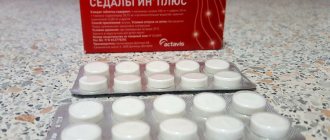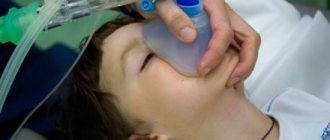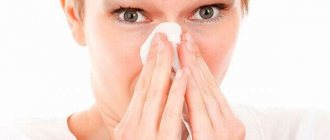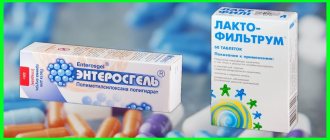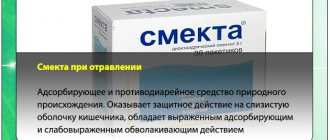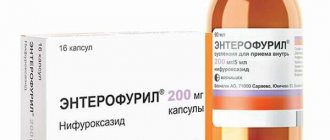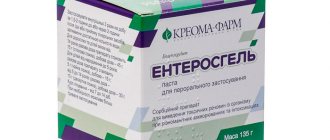The digestive system is responsible for overall human health. Poor environmental conditions, poor nutrition, and the use of medications cause contamination of important internal organs. This manifests itself in poor health, regular colds, infections, viruses, and poor appearance. Absorbents for intestinal cleansing will help restore health to the body and beauty to the skin. They will quickly and effectively remove toxic substances.
General information about sorbents
In medicine, sorbents are prescribed for cleansing the body and for allergies in almost one hundred percent of cases. However, this is not the only use of such substances in the modern world. Their name comes from the Latin language. Translated, it means “absorbing,” which reveals the very essence of the action of such substances.
Sorbents can be in solid and liquid states, and are designed to absorb gases, chemical compounds, vapors and other components. In some cases, the use of sorbents can save people from environmental disaster. For example, during an oil spill in open waters, it is substances from this group that are used to prevent the oil slick from spreading over the surface. Often, sorbents are used for wastewater treatment, industrial emissions into the atmosphere, and so on.
We think our reader understands that the range of uses of the substances described is extremely wide. Therefore, they have their own classification based on the principle of impact. According to this, there are four types of sorbents:
- Absorbents. They effectively absorb gases and certain components of solutions. In this case, absorbents act with their entire volume.
- Adsorbents. Substances from this group are capable of inhibiting certain components. They seem to compress them on the surface, not allowing them to spread freely.
- Ionites. The mechanism of their influence is slightly different than that of previous groups. They are effective mainly in working with solutions. Ion exchangers can absorb some ions and release others in return.
- Chemical. These sorbents act on toxins through chemical reactions. Thanks to this, they absorb harmful components in various states from the environment, including water.
In pharmacology, sorbents from different groups are used. They will be discussed in more detail in the following sections.
"Smecta"
The active principle of Smecta is a natural substance like clay - aluminosilicate. Its sorption capacity is average (100 mg/g), but this sorbent has some advantages.
- Has a selective sorption effect (absorbs toxins, but not beneficial substances).
- Sorbs pathogenic microflora and does not suppress beneficial intestinal bacteria.
- Envelops the intestinal mucosa, protecting it from harmful influences.
- Stabilizes intestinal mucus.
Smecta is prescribed for acute and chronic poisoning, diarrhea of unknown origin, colic and pain caused by diseases of the esophagus, stomach and intestines. The sorbent also helps with flatulence, bloating, and intestinal infections.
A large number of studies have been conducted on the drug. Smecta is produced in a convenient form - a powder in a bag for one dose, with the addition of flavoring.
Similar sorbents based on white clay operate according to the Smecta principle:
- "Neosmectin"
- "Diosmectite."
Means for neutralizing intoxication
For adults and children, sorbents for cleansing the body in case of allergies or in cases of poisoning of various types are prescribed mainly from the group of adsorbents. Such drugs bind most known toxins in the gastrointestinal tract, and then they are eliminated through the excretory system.
Interestingly, for several years now the scientific world has been developing a new drug that will effectively fight cancer. This product is an adsorbent polymer. It penetrates into tissues affected by cancer and gradually releases the substances it contains. Thus, chemotherapy is planned to be carried out in the near future, but at the moment this drug is at the development stage.
Today, doctors actively prescribe various types of sorbents to their patients, most of which are available in the form of tablets, capsules and gels for oral administration. There are also drugs for neutralizing intoxication for external use. They are shaped like powder.
The effectiveness of each specific product is assessed based on a set of characteristics. Initially, you need to focus on the capacity of the sorbent. It is expressed in the amount of toxic substances that one unit of medicine can bind.
Equally important is the ability of the sorbent to neutralize substances of different categories. The most in demand are drugs that can bind both chemical units and pathogenic microorganisms.
Toxicity and safety are the conditions that play a major role when selecting a sorbent for children with allergies and other health problems. After all, not all products can be as safe for a small person while being highly effective.
Considering that sorbents actively interact with tissues and internal organs, it is very important that their components are compatible with human cells.
For children when treating allergies, doctors try to select sorbents in accordance with the following additional characteristics:
It is important to understand that children's sorbents for allergies are most often prescribed as part of complex therapy. Thus, the little patient gets the opportunity to get rid of not only the symptoms of the disease, but also the accumulated toxins.
In addition to allergies, sorbents are taken to treat many health problems in children and adults. Among them are poisoning, including alcohol poisoning, pathologies of the gastrointestinal tract and pancreas, problems with the kidneys and liver, rheumatism and psoriasis.
Mechanism of action and indications
How do medications work when they enter the body? What effect do they have on systems and organs?
- Absorption and removal of toxic compounds from the body,
- Reducing the negative impact of toxins on internal organs,
- Stimulation of the processes of excretion of decay products through the kidneys or intestines,
- Restoring the normal functionality of the digestive system.
When ingested, the medicine gradually absorbs all toxins and provokes their elimination. In what cases is it permissible to use sorbents to cleanse the body? Medicines are prescribed in different situations.
- Disturbances in the normal functioning of the kidneys and liver,
- Allergic reactions,
- Metabolic disorders, development of dysbacteriosis,
- Poisoning with alcoholic beverages, medications, drugs and poisons,
- Food intoxication
- Diseases of the digestive system of an infectious nature,
- Atopic dermatitis, bronchial diseases.
It is not prohibited to use synthetic and natural sorbents to normalize the body’s condition during hangover syndrome.
It is recommended to remember that all synthetic sorbents are medical drugs.
Classification of sorbents by active substance
Which sorbent is better for allergies is difficult to determine even with specialized medical education. After all, each patient is individual and you need to choose a drug based on the main substance, focusing on age, course of the disease and other characteristics. However, it is important to take into account that sorption preparations, depending on their characteristics, also change their basic properties. Today, pharmaceutical companies produce three types of sorbents:
Each type has several sorbents used for children with allergies. We will describe some of them in the following sections of the article.
Conclusion
Sorbents can be called a lifesaver. These substances must be in the first aid kit of every home. Their use is often simply necessary: for various poisonings, stomach diseases and intoxications of many types.
Sorbents actually work very effectively for the benefit of the body. The effect is immediate. A certain lightness can already be felt after a few days of treatment. Also, you simply cannot do without these drugs if there are children running around the house, since they are most susceptible to poisoning, since they put everything in their mouths.
A person inevitably faces poisoning. Thanks to science, sorbents have been discovered that help overcome illnesses associated with the accumulation of toxins in the body. Sorbents for poisoning have been used since ancient times. Previously, natural ingredients were used, today they are medicines.
Mineral products
These sorbents can have one of two possible main substances:
A carbon-based medicine is the well-known activated carbon, which does not cause negative reactions and perfectly removes toxic substances of any kind from the body. But in the case of small children and allergies, a sorbent (preparations with carbon as an active ingredient are not very diverse) of this type is useless. This is due to the fact that activated carbon is drunk in large quantities that children simply cannot take. You also need to take into account that it practically does not remove allergens from the body.
Preparations with silicon dioxide are in great demand in the treatment of children and expectant mothers. These sorbents quickly remove toxic substances, do not interfere with the absorption of other drugs and do not produce side effects. Drugs from this group are always included in the list of sorbents for children with allergies.
Indications for use
The scope of application of sorbent agents is extensive and does not have strictly established indications. Most often they are prescribed in the following cases:
- dysfunction of the liver and kidneys, when internal systems cease to cope with toxins on their own;
- dysbacteriosis and changes in metabolic processes;
- all types of allergic reactions;
- intoxication due to the intake of alcohol, medications, narcotic or toxic substances;
- food poisoning;
- infectious diseases of the digestive system;
- bronchial asthma and atopic dermatitis.
Synthetic products
The active ingredients of such drugs are chemical compounds. The advantages of such sorbents include their wide spectrum of action. They effectively stop the absorption of not only toxins, but also bacteria from the gastrointestinal tract.
Such drugs are often available in the form of a suspension, gel, or less often in the form of tablets. In case of allergies, sorbents of this group are practically not prescribed for children. Despite their high efficiency, they are quite aggressive for the child’s body. As a last resort, synthetic sorbents can be prescribed to young patients for certain indications or upon reaching fourteen years of age.
Activated carbon
The drug is charcoal of animal or plant origin that has undergone special processing. It is effective for acute poisoning, bacterial enteritis (salmonellosis, dysentery). Activated carbon absorbs toxins, gases, and excess acid in the gastric juice. The drug collects salts of heavy metals and alkaloids well, and somewhat worse - acids and alkalis.
Compared to other sorbents for intestinal cleansing, activated carbon is inexpensive, but its sorption capacity is the lowest - 5 mg/g, so a larger amount is required. In case of intoxication, the drug should be taken 20–30 g per day, i.e. 40–60 tablets. In case of acute poisoning, the dosage is prescribed by the doctor individually.
Activated charcoal should be taken for 1-3 days. The oral dose according to the instructions is 250–750 mg 3–4 times a day. The tablets are ground into powder and stirred in water (150–200 ml). During the treatment period, the stool becomes black, this is normal.
There is another method of using activated carbon for preventive purposes - drink 1-2 tablets every morning on an empty stomach with a glass of water.
Activated carbon has significant disadvantages. Long-term use of the drug causes constipation. And also when using it for more than 7 days, the following side effects are possible:
- nausea,
- stomach ache,
- flatulence,
- belching,
- heartburn.
Activated carbon, in addition to toxins, absorbs vitamins, minerals, and nutrients. That is, it does not act selectively and absorbs everything - both harmful and useful. It is not recommended to give the drug to children, as solid particles of coal injure the intestinal mucosa.
The disadvantages of activated carbon include desorption - the return of collected toxins into the intestinal lumen and their absorption into the blood. Therefore, it is important to induce bowel movement within 2 hours after taking the sorbent.
Activated carbon preparations are produced in the form of tablets, powder, granules, capsules, and also in the form of a paste.
Activated carbon analogues:
- "Carbolong"
- "Carbolen"
- "Carbosorb"
- "Carbactin"
- "Sorbex".
Natural sorbents
The components of drugs belonging to this group are very easily extracted from plants. This is what makes them affordable and effective. Natural sorbents use several types of active components:
Most often, the manufacturer sells natural sorbents in the form of dietary supplements. They are characterized by a high degree of efficiency. Taking such drugs allows you to get rid of intoxication very quickly, however, despite the abundance of advantages, natural sorbents are extremely rarely prescribed to children. They are indicated for adolescents from the age of fourteen, since in order to obtain an effect it is necessary to ensure that a large dosage of substances enters the patient’s body. This is extremely dangerous for young patients.
The effectiveness of the sorbent drug Enterodes
Enterodesis is a safe remedy for the digestive tract. It does not accumulate in the body, is not absorbed or metabolized, unlike carbon adsorbents. Twenty years of clinical experience allows us to draw the following conclusions:
- exhibits the ability to adhere to microbial cells - has established itself as an etiotropic drug;
- the effect appears within 15-20 minutes after administration;
- shortens the duration of symptoms;
- supports normal intestinal microbiocenosis;
- does not contain aromatic additives, has a slight bitter taste, which is easily interrupted by fruit juice or sugar syrup (add 1 tablespoon);
- hypoallergenic;
- simple and easy to use;
- for all age groups the dosage is indicated in the instructions;
- there are no side effects and long-term use is allowed;
- absorbs toxins of gram-negative bacteria;
- successfully used as a pathogenetic agent;
- is eliminated from the body quickly and completely.
Harm or benefit of sorbents for children: find out the details of their use
A modern child is often born with food allergies. In many children, it manifests itself as they grow older, intensifying and taking on more serious forms. Therefore, parents should not ignore this problem. Is it possible to give sorbents to babies with allergies? Reviews from mothers and doctors allow us to conclude that such products are extremely effective and simply necessary in neutralizing allergic reactions of varying degrees.
Usually we pay attention to the disease when the child’s skin turns red and a rash appears on it. This is the first visible symptom of an allergy. It’s good if the irritant can be immediately identified and eliminated. However, in most cases, especially with infants, this is impossible to do. Therefore, allergies continue to develop, and changes occur not only outside, but also inside the body. Due to interaction with the allergen, the baby gradually accumulates toxins. This disrupts the functioning of many internal organs, and when a critical limit is reached, it becomes the cause of serious intoxication. Therefore, experienced allergists try to prescribe sorbents along with antihistamines. Thus, not only the symptoms of the disease are neutralized, but also the body is completely cleansed. Based on all of the above, the conclusion suggests itself about the undoubted benefits of such drugs for children. The main thing in complex treatment is the correct choice of remedy and compliance with the recommended dosage.
What sorbents should I give my child for allergies? It is difficult to answer this question unequivocally, but doctors can still voice general recommendations on choosing a drug for young patients.
When making a prescription, doctors are inclined to favor sorbents, which are convenient to give to the baby. This greatly simplifies the treatment process. In addition, it is important that they do not have a strong odor or fragrances. They cannot benefit a child suffering from allergies, and in some cases they can even worsen their health condition.
Doctors consider the ability to maintain microflora in the gastrointestinal tract to be an indispensable condition for a children's drug. The sorbent cannot be aggressive to the delicate mucous membrane of a child’s stomach.
It is equally important that after absorption, all components of the drug are completely eliminated from the baby’s body. This is the main safety characteristic of the drug. Doctors always select products with a high degree of adsorption for a child suffering from allergies. Only in this case, with a minimal dosage and no side effects, will the little patient quickly feel relief.
And one more nuance that specialists must take into account when developing a treatment regimen is the absence of toxic additives. The child's body is quite fragile and sensitive to a wide range of substances, and some additives can even cause toxic shock. Therefore, the doctor must be confident in the drug prescribed to the small patient.
Pharmaceutical companies developing sorbents for children of different ages always take into account the listed features of the drugs. They add special enveloping substances to them, which work very gently in the intestines and do not give negative effects, and are also completely eliminated, while the drug components act only in the intestines, without affecting other organs.
Types of sorbents and their effect on the children's body
Any sorbent - for adults or children - is a substance that absorbs toxins in the body, neutralizes them and removes them outside. The mechanism of action of these drugs is different, so they are divided into three groups:
- Absorbents that neutralize liquid toxins, turning them into solid ones, preventing them from being absorbed by the intestinal walls. Thus, the effect of the poison on the body is reduced to the maximum permissible minimum.
- Adsorbents have a branched microstructure due to which they absorb poisons like a sponge.
- Chemical absorbents react with toxins, neutralizing them.
Modern absorbent preparations not only neutralize poisons, but also temporarily force the digestive system to work more intensively, removing toxins. Their action can be compared with the functions of the liver, the work of which they relieve. This allows her to start producing substances beneficial to the body.
Sorbents help the body cope with poisoning on its own, removing toxins naturally and facilitating the functioning of the liver.
However, let’s not discount the fact that these drugs also have a negative effect, especially on the child’s body. If you give them in large quantities uncontrollably, this will lead to the removal from the body of not only poisons, but also elements necessary for normal life. For example, when children are given sorbents and vitamins or medications, the latter work less effectively.
There are also a number of diseases and internal injuries for which sorbents cannot be used by either children or adults. These include:
- stomach and/or duodenal ulcer,
- erosion of the stomach walls,
- gastritis,
- bleeding in the gastrointestinal tract,
- intestinal atony,
- mechanical damage to the esophagus and gastrointestinal tract.
Absorbent for children in such cases can seriously aggravate the situation, which can cause death.
List of medicines
What sorbent should I give my child if he has allergies? If you are thinking about this topic, then you need a list of the most effective and safe products that should definitely be in your home medicine cabinet. So, if your child is an infant or has not yet reached three years of age, then he is shown:
From three to seven years old, your child can be given:
A seven-year-old child may well take regular activated carbon in case of poisoning, and in case of allergies to any of the above drugs. From the age of fourteen, in such cases, it is recommended to drink white coal.
Useful tips and tricks
In order for the enterosorbent to be as effective as possible, you must follow the rules of administration:
- the calculation of the drug is carried out in accordance with the patient’s body weight - 0.2-1 g per 1 kg of weight;
- the daily dose recommended by the doctor is divided into 3-4 times;
- take the drug with plenty of water;
- in case of allergies, sorbents are combined with vitamin complexes; after a week, the consumption of sorbents is gradually reduced until completely eliminated;
- other medications are taken two hours after consuming sorbents;
- to reduce the absorption of alcohol, the detox drug is taken 25 minutes before the feast;
- for preventive purposes, taking absorbent and adsorbent agents lasts from one week to ten days.
Sorbent for infants with allergies
Usually, when detecting intoxication or an allergic reaction, doctors prescribe Polysorb to infants. This sorbent belongs to the mineral category and is considered one of the most effective drugs in its group. It helps with allergies, intoxications of varying severity and nature, including toxic substances. It also removes harmful substances from the body that are formed in patients with kidney and liver failure. The course of treatment varies from three days to a month. It is determined by the doctor, as well as the dosage of the sorbent.
The manufacturer produces the drug in powder form. Before use, it is necessary to prepare a suspension from it according to the instructions. "Polysorb" is sold in cans or packages with several sachets. Infants are given sorbent in a dosage of half to one and a half teaspoons per day. To relieve acute conditions, it is enough to take the suspension for three to five days. A more severe course of the disease will be accompanied by a minimum course of treatment of two weeks.
Polyphepan is no less effective. This sorbent is classified as universal, and according to the general classification it is natural. The drug acts by adsorption and, in addition to its main function of cleansing the body, improves digestion and has a regenerating effect.
Basically, "Polyphepan" is produced in the form of a powder, reminiscent of earth in color and consistency. For children, the daily dosage is calculated based on weight. The minimum dose is one hundred milligrams per day per kilogram of the child’s weight. The maximum can be increased to three hundred and fifty milligrams per kilogram. For infants, the drug is dissolved in a small amount of water. The average course of treatment is a week.
Among sorbents for allergies for children under one year old, Smecta raises the most questions. Mothers often express the opinion that this drug is ineffective in the complex treatment of allergic reactions. However, experts say that this idea is wrong.
"Smecta" refers to synthetic sorbents and gives very good results in case of intoxication of the body. You need to keep in mind that it contains flavorings, so even the little ones like it. The drug is available in the form of a sachet. For infants, one sachet dissolved in fifty milliliters of water is enough. This amount of the drug is taken three times. Upon reaching the age of one year, the dosage can be increased two or even three times.
How to choose suitable sorbents for children
Children are given sorbents for various reasons:
- in case of poisoning,
- due to an allergic reaction to something,
- for disorders of the digestive system.
Pharmacy shelves are lined with similar drugs in various forms. And to make the right choice, you should first consider the age of your child. Although sorbents for children have minimal contraindications, these drugs have various side effects, which is why it is so important to select them according to how old the child is.
Most often, doctors prescribe one of four well-known drugs:
Another important factor for choosing one or another enterosorbent is the clinical picture of the disease. When a child suffers from prolonged diarrhea that does not go away within four hours, it is best to give him Smecta. This drug coats the intestinal walls and relieves irritation.
If the poisoning was caused by other medications, then the most correct solution would be to give the baby Polysorb or Enterosgel. However, when taking them, it is important to adhere to the main rule: you need to drink a lot.
- Firstly, so that toxins bound by sorbents are quickly removed from the body.
- Secondly, with vomiting and diarrhea, dehydration occurs, which absorbents only intensify.
And now it’s worth taking a closer look at popular and effective sorbents for children.
This is the most well-known remedy, compared to its analogues. It is often given when a child suffers from prolonged diarrhea. Although Smecta does not lead in absorption properties, it is enough to save a child from mild and moderate intoxication.
In addition to the absorbing properties inherent in all sorbents, Smecta also has an enveloping function. If you need to relieve intestinal irritation, this drug is just right; by enveloping the internal mucous membranes, Smecta prevents poisons from being absorbed into the blood, therefore, the poisoning is not aggravated, and toxins are eliminated.
The active substance of this drug is silicon dioxide, which is recognized as an effective sorbent. Polysorb has a number of advantages over similar medications:
- high degree of adsorption,
- minimal negative impact on the digestive system,
- a unique mechanism of action consisting in enveloping particles of toxins, after which the body simply does not perceive them and calmly removes them.
Polysorb is in the form of a powder in a special package, the capacity of which is designed for one-time use. Take the drug, like Smecta, diluting it in a glass of water. This achieves two goals:
- minimize dehydration,
- the medicine works better.
The dosage is calculated based on the child’s weight.
Sorbents prescribed for children from three to seven years old
Which sorbent is best for allergies in your particular case, only your attending physician can tell. However, there is a high probability that he will prescribe Enterosgel for your little one. The mineral preparation absorbs toxic substances and allergens quite quickly. It can even remove pathogenic microorganisms, which are not susceptible to every sorbent.
Interestingly, Enterosgel copes not only with food allergies, but also with drug allergies. The average course of treatment does not exceed two weeks. Children are usually prescribed forty-five grams of the product three times a day. If necessary, the gel can be mixed with water.
"Filtrum-Safari" is a natural sorbent and contains lignin. Children take it very well, since the drug is in the form of chewable tablets or lozenges in the shape of animals. One package can contain six or eighteen plates of tablets.
This sorbent not only effectively absorbs harmful substances, but also has a positive effect on the digestive tract. You need to take the tablet an hour before meals, chewing well. Children under five years of age should be given half a lozenge three times a day. For children from five to seven years old, the dosage is increased - one tablet per dose. Older children may take two lozenges at a time.
Colon cleansing products
If you feel bloated, nauseous, your skin color has become paler and you are drawn to unhealthy foods, you can cleanse your intestines with sorbents. A clogged organ works much worse, frequent headaches, a feeling of heaviness in the stomach are possible, a white coating on the tongue, a rash on the skin, bad breath, and sweating may appear. To get rid of these unpleasant symptoms, you will need absorbent agents - enterosorbents. These drugs must be present at home to cleanse the body; everyone needs to use them periodically.
- Pregnancy test at home. How to determine pregnancy using traditional methods and test results
- Laser blood purification
- Stages of puberty in teenage boys, early and late onset of adulthood
In tablets
The use of sorbents for intestinal cleansing in the form of tablets is very popular and in demand. The tablets, entering the stomach, first swell and then dissolve, while the active ingredient (active substance) is gradually released. The sorbent tablet absorbs all harmful allergens, bacteria, microorganisms, heavy metals, toxins and other substances.
- "Activated carbon" . It is the simplest, most accessible sorbent preparation, so cleaning the intestines with activated carbon will be a great idea. In addition to waste and toxins, it will help cleanse the body of alcohol. Available in tablet form, less often as powder. In case of poisoning, 1 tablet (0.25 g) per 10 kg of body is used to cleanse the body. Because This is a carbon sorbent, it must be taken 1-2 hours before meals or other medications, otherwise it will remove all the beneficial properties from them. Side effects include constipation, black stools, and indigestion.
- "Polyphepan". The drug is available in the form of powder or tablets; the main active ingredient of the sorbent is lignin. It has good adsorbing properties and will perfectly cleanse the intestines. "Polyphepan" does not have a toxic effect on the body and can be used by pregnant women. It is necessary to take the sorbent drug at the rate of 0.5-1 g of the substance per 1 kg of body weight. To improve bowel function, it should be consumed three times a day.
- "White coal". The main active ingredient is not carbon at all, but silicon dioxide, which is much more effective than classic activated carbon; in addition, much smaller dosages are used. It must be consumed by adults 3-4 t. 3-4 r. in a day. The drug has virtually no side effects, however, with long-term use, take vitamins and minerals, because they are removed from the body by sorbents.
In capsules
This form of release has some advantages over tablets and their effects. Sorbent capsules are made from substances that easily dissolve in the stomach, so the active substance is released faster and begins to work. Sorbent capsules dissolve quickly, you will get quick results for intestinal problems. The tablet acts a little slower, but you don’t have to focus on the form of the drug if the speed of action of the drug is not critical.
- "Sorbolong" . Sorbent capsules are used for food, alcohol, drug poisoning, diarrhea, etc. Instructions for using the drug are 1-2 capsules, depending on the severity of intoxication. The composition includes a powerful sorbent enterosgel and prebiotic inulin. Side effects sometimes include nausea and flatulence, effects and cleansing are quick.
- "Sorbex" . The drug is granular activated carbon, so the side effects are similar. The sorbent is taken 2-4 capsules 3 times a day. per day depending on the severity of intoxication. If you don't like swallowing tablets with activated carbon, then capsules will come to your aid.
Sorbents for children
Children's bodies are more susceptible to medications, so you must be careful when choosing sorbents. If there is a minimal threat to life or severe diarrhea causes severe dehydration of the child’s body, call an ambulance immediately. The best solution would be to prescribe sorbents by a specialist, because... Self-medication of a child can end tragically.
- "Smecta" is a very popular children's sorbent drug, which is used for acute, chronic and infectious diarrhea, for the treatment of heartburn, bloating. The good quality of the drug is that it is not absorbed into the body, but is excreted unchanged. Can be used up to a year per sachet, 1-2 years 2 sachets and over 2 years - 3 sachets.
- “Sorbovit-K” can be used safely for children of any age and by adults for a comprehensive preventive method of treating body diseases and cleansing. The tablets of the drug are black in color because they are developed on the basis of activated carbon fiber material. In addition to self-cleansing the body of toxins, the sorbent will help get rid of kidney diseases, allergies, cleanse the liver and even improve health after radiation chemotherapy for cancer. Dosages of the drug vary depending on the purpose of use and the severity of the disease.
Sorbed probiotics
- “Lactofiltrum” combines the probiotic lactulose and the natural sorbent lignin, so this combination has a double positive effect on the body. The drug is used by adults 2-3 tons 3 times a day.
- The dietary supplement “Bactistatin” contains a natural sorbent zeolite and a prebiotic to normalize intestinal function. It is recommended to use the drug for a month, 2 capsules 2 times a day. The sorbent will rid the body of the harmful effects of toxins, and the prebiotic, without being absorbed in the small intestine, will stimulate the growth of the microflora of the large intestine.
Contraindications to taking sorbents
Drugs that help cope with intoxication of the body are as safe as possible. They have a rather narrow list of contraindications. It includes the following health problems:
It’s easy to choose a good sorbent for allergies. There are quite a lot of such drugs, so parents who are concerned about the health of their children must use them in complex therapy.
"Polysorb MP"
Another drug based on silicon-containing substances is Polysorb MP. To cleanse the body, it is prescribed for various acute and chronic diseases, poisoning, and intoxication after chemotherapy.
The active ingredient "Polysorb MP" is colloidal silicon dioxide. Of all the sorbents, it has the highest sorption capacity (300 mg/g).
"Polysorb MP" binds all types of toxins, harmful viruses and bacteria. The drug retains them well and removes them from the intestines.
Polysorb MP is produced in powder form. It is not subject to temperature influences and quickly begins to act after entering the stomach and intestines.
Sorbents for cleansing the body of alcohol
Enterosorbents bind excess alcohol and its breakdown products (acetaldehyde). They need to be taken one dose before the feast, after it and in the morning to relieve a hangover.
Good sorbents for cleansing the body of alcohol are preparations based on lignin (Polifepan, Liferan, Lignosorb). It should be borne in mind that you need to empty your intestines within two hours, otherwise toxins will be absorbed back into the blood.
In case of acute alcohol poisoning, stronger sorbents are taken - Polysorb MP, Polyphepan, Enterosgel.
For example, the regimen for taking the Enterosgel sorbent to cleanse the body of alcohol is as follows.
- 10–15 minutes before starting libations, drink one part of the drug per three parts of the expected volume of alcohol.
- Take 45 g after a meal and in the morning.
- In case of severe intoxication with alcoholic products, rinse the stomach with water and a single dose of Enterosgel. Then take it orally in a dose of at least 45 g. Repeat the drug after 4–8 hours.
